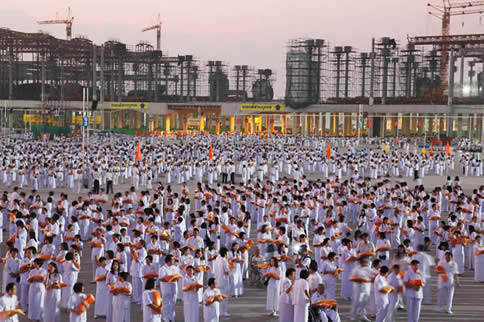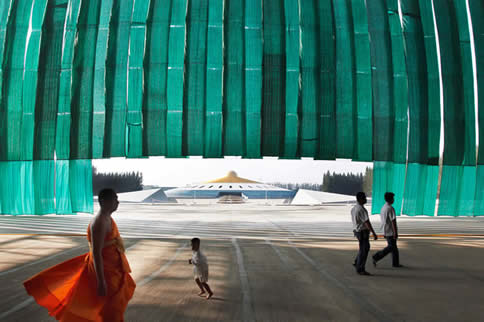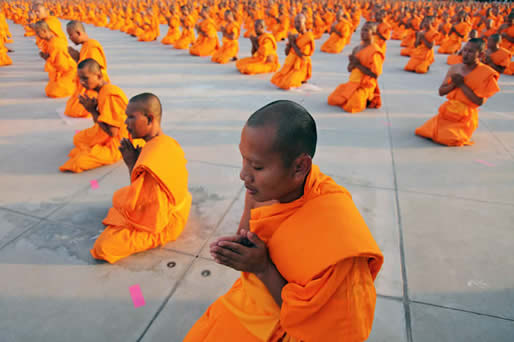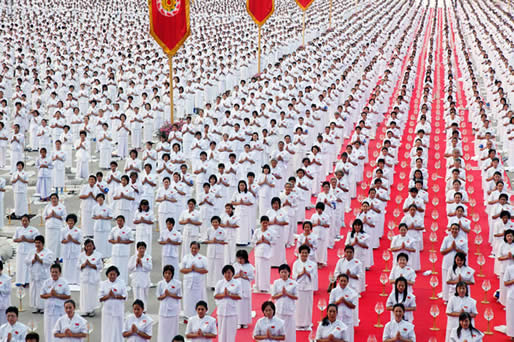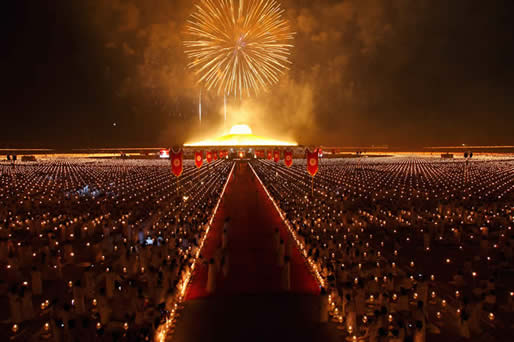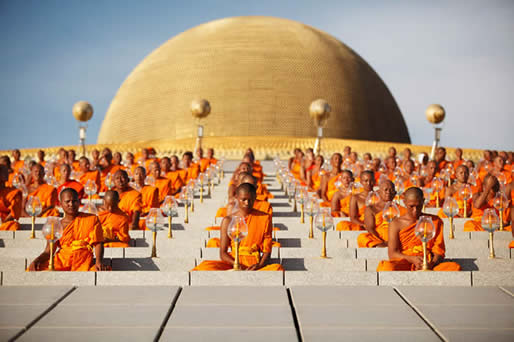
Picture this: millions of followers gathering around a central shrine that looks like a giant UFO in elaborately choreographed Nuremberg-style rallies; missionary outposts in 31 countries from Germany to the Democratic Republic of the Congo; an evangelist vision that seeks to promote a "world morality restoration project"; and a V-Star program that encourages hundreds of thousands of children to improve "positive moral behavior." Although the Bangkok-based Dhammakaya movement dons saffron robes, not brown shirts, its flamboyant ceremonies have become increasingly bold displays of power for this cult-like Buddhist group that was founded in the 1970s, ironically, as a reform movement opposed to the excesses of organized religion in Thailand.
Yet, despite the pageantry, the inner workings of this fast-growing movement are little known to Thailand's general public, and certainly to the rest of the world, though its teachings loom large among the legions of devotees. The veil of secrecy parted briefly in late 1999, when two top Dhammakaya leaders were charged with embezzlement in what many considered a political ploy to suppress the temple's growing power. The charges were dismissed in 2006 after the former abbot and a colleague returned some land and nearly 1 billion baht ($32 million) to temple control.
This obscurity is because -- despite its 24-hour satellite TV station -- Dhammakaya has diligently worked to avoid the limelight. Until now. Over the past year, photographer Luke Duggleby and reporter Ron Gluckman have been granted unrivaled access to the facilities and ceremonies of Dhammakaya, and they provide an exclusive look at this mesmerizing movement.
